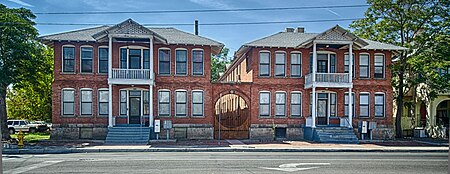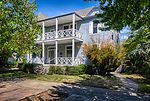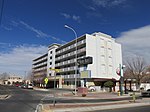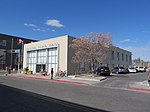Washington Apartments
National Register of Historic Places in Albuquerque, New MexicoNew Mexico State Register of Cultural PropertiesResidential buildings completed in 1916Residential buildings in Albuquerque, New MexicoResidential buildings on the National Register of Historic Places in New Mexico

The Washington Apartments are a historic apartment complex in Albuquerque, New Mexico. The property is notable as a well-preserved example of early 20th-century apartment construction in the city, along with the Eller Apartments and Newlander Apartments. The apartments were built in 1916 by local businessman James D. Eakin and, as of 1981, had remained relatively unaltered. The complex is listed in the New Mexico State Register of Cultural Properties and the National Register of Historic Places.
Excerpt from the Wikipedia article Washington Apartments (License: CC BY-SA 3.0, Authors, Images).Washington Apartments
10th Street Southwest, Albuquerque Downtown Albuquerque
Geographical coordinates (GPS) Address Nearby Places Show on map
Geographical coordinates (GPS)
| Latitude | Longitude |
|---|---|
| N 35.086388888889 ° | E -106.65861111111 ° |
Address
10th Street Southwest 101
87102 Albuquerque, Downtown Albuquerque
New Mexico, United States
Open on Google Maps









